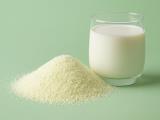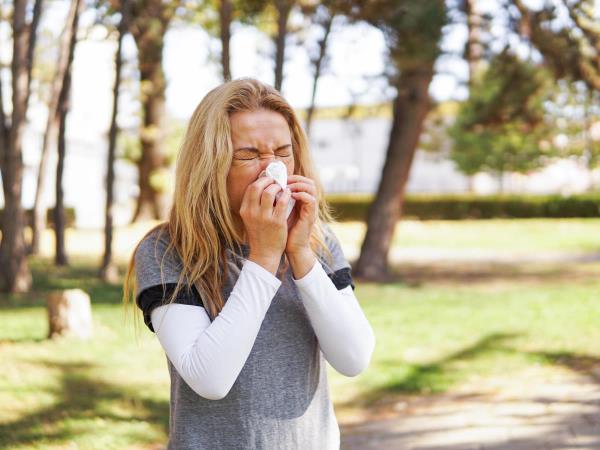Science actually shows something much more concerning. Global warming directly influences how much pollen plants release, more than we might dare to admit.
In recent decades, the world has become warmer. Temperatures are rising, and the atmosphere is becoming more saturated with carbon dioxide (CO2). Although we cannot see this gas, it has a strong impact not only on glaciers and weather extremes but also on how plants grow, bloom, and how strongly they attack us with allergens.
What is actually happening with plants?
An interesting experiment was conducted at the renowned Harvard Medical School. It was led by the esteemed physician and researcher Dr. Paul Epstein, who founded the Center for Health and the Global Environment in 1996. Together with his team, he grew plants in two different environments. Both were closed systems where they monitored the amount of CO2 in the air.
In the first system, the carbon dioxide concentration was similar to today's level, approximately 350 parts of CO2 per million parts of air (which is also approximately the level Earth had around 1980). In the second system, they simulated the atmosphere of the future, the one that we might face in a few decades if things continue as they are: 700 parts of CO2 per million parts of air.
Plants in the higher carbon atmosphere produced a whopping 61% more pollen! This means that with every breath in such an atmosphere, we inhale almost twice as many micro-particles that cause sneezing, tearing, and even more severe forms of asthma.
What does this mean for you?
Do not be deceived by the thought that pollen is just harmless flower dust. It is one of the most potent natural allergens. Substances that can trigger a strong immune response in sensitive individuals. The most common symptoms are a stuffy nose, itchy eyes, fatigue, and in some cases breathing difficulties. All of these can lead to allergic rhinitis, and in severe cases, even asthma, a chronic lung disease that can significantly impact quality of life.
The World Health Organization estimates that about 400 million people suffer from allergic rhinitis today. By 2050, this number is expected to almost double, also due to environmental influences. According to some estimates, every third child in Europe is already an allergy sufferer, and this trend is rapidly increasing.
What does nature say?
Throughout history, humans have known to seek help from nature. In our folk tradition, we are familiar with numerous remedies that can help alleviate symptoms and strengthen immunity. Among the most well-known and effective is nettle, which contains natural antihistamines that reduce the body's response to allergens. We recommend preparing a tea from fresh or dried nettle daily during the flowering season (March-June). But caution: nettle is a potent plant, so the tea should not be too strong.
Honey, especially locally sourced, is often used in folk medicine as a natural desensitization therapy. Regular consumption of honey produced in your environment is believed to help the body adapt to local allergens. While scientific evidence is not yet fully confirmed, honey is rich in vitamins, enzymes, and antioxidants, so there is no reason not to include it in your daily diet.
According to Dr. Andrew Weil, a physician and pioneer of integrative medicine, a combination of vitamin C, omega-3 fatty acids (e.g., from flaxseed or fish), and probiotics can help the body regulate immune response. A study published in the journal Allergy in 2019 showed that individuals who regularly consumed probiotics experienced 30% fewer allergy symptoms.
What can you do today?
If allergies bother you, it doesn't mean you are helpless. Modern research shows that preventive measures are still the most potent weapon. Check when pollen levels are highest in the air. The most critical months are from March to the end of June, with grassy plants being the major troublemakers. Climate change is causing shifts in the blooming seasons as well. The exact reasons for this phenomenon are not fully understood by science (yet), and neither is what other equally or even more allergenic substances are present in the air.
Nevertheless... Science recommends:
- Ventilate your home early in the morning or late at night when pollen levels are lower,
- Dry laundry indoors (!!!),
- Wash your face and hair after a walk,
- Use nasal filters or simply stay indoors more often.
What about the long term?
When it comes to an important question. Climate change is not only about distant polar ice caps melting but affects our health here and now. As research shows, due to climate changes, pollen seasons have already extended by an average of 20 days, and pollen levels have increased by more than 20% in the last 30 years, mainly due to rising temperatures and more atmospheric CO2. This leads to more allergies, more doctor visits, more medication usage, over a longer period, and a lower quality of life.
Therefore, it is not surprising that many doctors are already emphasizing: the health of the future will strongly depend on the health of the planet. If we do not take action, symptoms that are currently unpleasant may turn into serious health challenges tomorrow.
Conclusion
In a time when nature is changing faster than we imagined, it may be right to look back at the tried-and-tested remedies of our grandmothers, to herbs, natural nutrition, and simple solutions. But at the same time, we must look ahead: support environmentally friendly practices, tree planting, emission reductions, and advocate for clean air.
What we breathe in today is no longer just air. It is a mirror of the world we are co-creating.









 Would you like to be informed about news on the website?
Would you like to be informed about news on the website?

